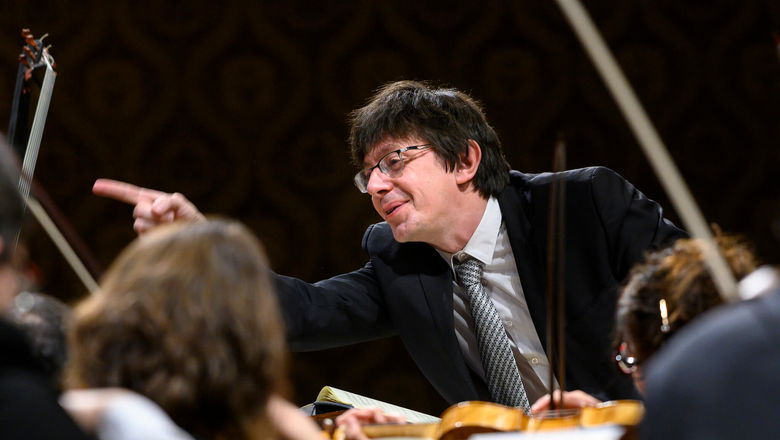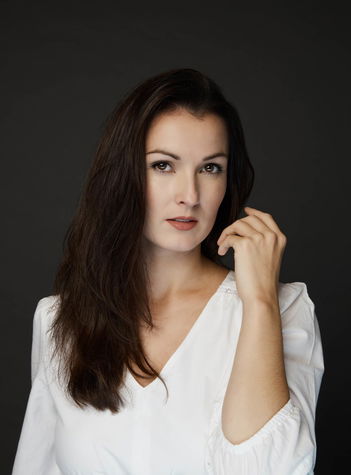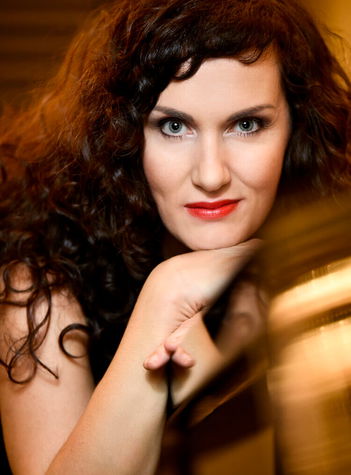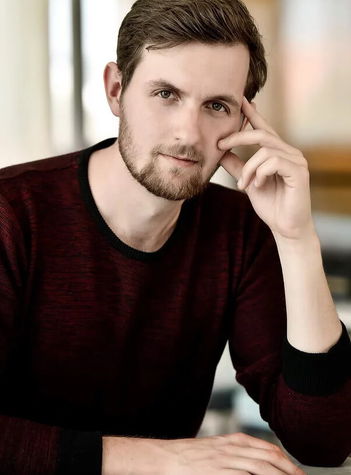Programme
Jakub Jan Ryba
Czech Christmas Mass “Hail, Master!” (44')
— Intermission —
Wolfgang Amadeus Mozart
Coronation Mass in C major, K 317 (24')
Secure your seat for the 2025/2026 season – presales are open.
Choose SubscriptionRyba’s Mass is a Czech Christmas tradition, and the Czech Philharmonic has programmed it repeatedly. This time, it will be in a unique collaboration with a specialist in the Baroque and Classical repertoire, the conductor Václav Luks and his Collegium Vocale 1704.
Jakub Jan Ryba
Czech Christmas Mass “Hail, Master!” (44')
— Intermission —
Wolfgang Amadeus Mozart
Coronation Mass in C major, K 317 (24')
Slávka Zámečníková soprano
Václava Krejčí Housková alto
Jaroslav Březina tenor
Roman Hoza bass
Václav Luks conductor
Collegium Vocale 1704
Czech Philharmonic

You can listen to the concert on our YouTube channel.
“When Jakub Jan Ryba composed his Czech Christmas Mass in 1796 for the church in Rožmitál, he may very well have had the music of Mozart in his ears—it was heard everywhere. The cantor of Rožmitál had enormous admiration for the Austrian genius, and he regarded Mozart’s works as the embodiment of musical perfection. In the simple harmonies of Ryba’s Mass, we cannot miss that Mozart was his model, nor can we fail to notice the melodic inventiveness of this extremely well educated musician. Besides his best-known Mass, he also composed a large quantity of very demanding and artistically ambitious works, but the simple music of this pastoral Mass still bears the hallmarks of Ryba’s genius”, says Václav Luks.
Slávka Zámečníková soprano

Slávka Zámečníková is one of today’s most promising singers, and her successes at the Berlin State Opera and the Internationale Maifestspiele Wiesbaden as well as at Moniuszko Competition, the Neue Stimmen Competition, and the Belvedere Competition in 2019 have awakened great expectations. Since the season 2020/2021 she has been an ensemble member of the Wiener Staatsoper, where she will be appearing as as Micaela (Carmen), Adina (L’elisir d’amore), and Marzeline (Fidelio) this season. She is also debuting at the Opéra national de Paris and the Théâtre des Champs-Elysées. Apart from her operatic experience, she has also appeared at the Prague Spring Festival, the Elbphilharmonie in Hamburg, and the Philharmonie de Paris. She graduated from the Bratislava Conservatory and earned her master’s degree and an artist’s diploma (Konzertexamen) at the Hochschule für Musik Hanns Eisler in Berlin, where her teacher was Anna Samuil. In addition, she has participated in various masterclasses and workshops with Anna Tomowa-Sintow, Brigitte Fassbaender, and Luciana D’Intino. She has received scholarships from the Junge Musiker Stiftung and the Deutschlandstipendium.
Václava Krejčí Housková alto, mezzo-soprano

The mezzo-soprano Václava Krejčí Housková studied at the České Budějovice Conservatory (with Dagmar Volfová) and the Academy of Performing Arts in Prague (with Jiřina Přívratská) and attended masterclasses under the tutelage of Margaret Honig. In 2010, she was engaged at the Moravian Theatre in Olomouc, in 2014, she made her debut at the National Theatre in Prague, and since 2015 she has been a soloist of the National Theatre in Brno. She has received two nominations for the coveted Czech Thalia Prize for her portrayals of the roles of Smeton (Anna Bolena, National Moravian-Silesian Theatre in Ostrava, 2014) and Carmen (J. K. Tyl Theatre in Pilsen, 2020). Her recording of Leoš Janáček’s Diary of One Who Disappeared with the tenor Nicky Spence and the pianist Julius Drake earned the prestigious BBC Music Magazine Award and Gramophone Classical Music Award. Václava Krejčí Housková has worked with renowned orchestras and has performed at major international events (Edinburgh International Festival, Prague Spring, Smetana Litomyšl, Prague Proms etc.).
Jaroslav Březina tenor
Jaroslav Březina studied at the Prague Conservatory (Zdeněk Jankovský) and further honed his technique with Václav Zítek. During his studies he became a member of the vocal ensemble Dobrý Večer Quintet. His extensive concert activities (primarily in the baroque and classical repertoire) have taken him to concert stages across Europe as well as in Japan. He has collaborated with many prominent conductors (Jiří Bělohlávek, Sir Charles Mackerras, Gerd Albrecht). Since 1993, he has been a soloist at Prague’s National Theatre in such roles as Don Ottavio (Don Giovanni), Count Almaviva (Il barbiere di Siviglia), Dancairo (Carmen), Fenton (Falstaff), Smetana’s Vašek and Jeník (The Bartered Bride), Janáček’s Laca (Jenůfa), and Martinů’s Yannakos and Panait (The Greek Passion). He is featured on CD recordings including J. J. Ryba’s Czech Christmas Mass (Deutsche Grammophon) and Zelenka’s coronation opera Sub olea pacis (Cannes Classical Award 2002) and has sung the role of Števa in concert performances of Jenůfa in Prague and London with Jiří Bělohlávek and the Czech Philharmonic. He was awarded the 2015 Thálie Award.
Roman Hoza bass, baritone

Bariton Roman Hoza studied at the Janáček Academy of Music and Performing Arts in Brno and spent a year at the Universität für Musik und darstellende Kunst in Vienna. In 2015 and 2016, he was a member of the Opera Studio within the Deutsche Oper am Rhein in Düsseldorf. After returning home, he was engaged as a soloist at the National Theatre in Brno, where he portrayed a number of major baritone roles (Mozart’s Don Giovanni and Guglielmo, Rossini’s Figaro, Donizetti’s Belcore, and others). He has appeared as a guest at the National Theatre in Prague (Mozart’s Figaro, Rossini’s Dandini, Donizetti’s Mamma Agata), the National Moravian-Silesian Theatre in Ostrava (Thomas’s Hamlet), the J. K. Tyl Theatre in Pilsen (Hamlet, Lehár’s Danilo), the Opéra national de Lyon, the Gothenburg Opera House, and elsewhere. In 2019, Roman Hoza returned to Düsseldorf to perform as Dandini. Since the 2020/2021 season, he has been a Deutsche Oper am Rhein soloist.
Václav Luks conductor
Václav Luks studied at the Pilsen Conservatoire and the Academy of Performing Arts in Prague, and he further engaged in the specialised study of early music at the Schole Cantorum Basiliensis in Basel, Switzerland. After returning from abroad in 2005, he transformed the chamber ensemble Collegium 1704, which he had founded during his studies, into a baroque orchestra, and he established the vocal ensemble Collegium Vocale 1704. In addition to his intensive work with Collegium 1704, Václav Luks also collaborates with other renowned ensembles such as the Netherlands Bach Society, the Akademie für Alte Musik Berlin, and the Handel & Haydn Society in Boston. He has worked with internationally renowned singers such as Karina Gauvin, Vivica Genaux, Philippe Jaroussky, Bejun Mehta, Sarah Mingardo, and Andreas Schöll. Under his direction, Collegium 1704 recorded the music for Peter Václavʼs epic film Il Boemo about the life of Josef Mysliveček. Václav Luks also served as the film director’s chief musical advisor. In June 2022, he received the Ordre des Arts et des Lettres from the French ambassador in Prague.
Collegium Vocale 1704
The vocal ensemble Collegium Vocale 1704 is among the worldwide elite in its field, and it appears together with the baroque orchestra Collegium 1704 on the world’s most important stages including Vienna’s Konzerthaus, the Philharmonie in Berlin, and Paris’s Maison de la Radio. It also participates regularly at the famed festivals in Salzburg and Warsaw. With its founder and conductor Václav Luks, the two ensembles present a concert season at the Rudolfinum in Prague, and Collegium Vocale 1704 also presents chamber music concerts separately at the culture palace Vzlet, where they have had their facilities since 2021.
Both ensembles collaborate regularly with the Bachfest Leipzig and the Opéra Royal in Versailles, which was a coproducer (along with the National Theatre in Brno and the Théâtre de Caen) of Handel’s opera Alcina performed in early 2022. Among their most important recent CDs have been the first Czech recording of Handel’s Messiah, Rameau’s Boreádes, which received the Trophées 2020 award and the 2021 Edison Award as the best opera recording of the year, and Zelenka’s Missa 1724 (2020).
Jakub Jan Ryba
Czech Christmas Mass “Hail, Master!”
“Here in Prague, I have found myself in a different world. I have been totally captivated by the music in Prague’s churches, at the Crusader Church, at St Nicholas’s in the Lesser Town, at St Michael’s, and elsewhere, led by Koželuh, Praupner, Strobach, and Vogel. For the first half year, I was deaf and blind, and I thought of nothing but music.” This quote from Ryba’s autobiography gives us an idea of Prague’s cultural atmosphere at the beginning of the 1780s, when he came here to study with the Piarists. The 15-year-old lad desired the career of a professional musician, but things turned out differently. In 1884, his father sent him a letter with the news that a teaching position had become available in Nepomuk, and he wanted his son to apply. How disappointed Jakub must have been! He hesitated for a while, but then he obeyed the commandment “Honour thy father and thy mother”, withdrew from the grammar school, completed a teacher training course, and headed for Nepomuk.
Four years later, he settled permanently in Rožmitál pod Třemšínem, a cosy little town of 1,100 souls surrounded by forests. He swore an oath that as a teacher he would “raise good people to be pious, honest citizens for the state”, and he established a family there. The school consumed most of his time, so he could compose only during the long evenings and nights. The need to compose music did not allow him to sleep. He was a very prolific composer; over a period of 32 years, he wrote nearly 1,500 compositions. Ryba’s fate as a village cantor was also reflected in his ideas about composing: “It is one thing to write for genuine, trained musical experts and for those who understand music, and something else entirely to write for ordinary listeners, of which one still finds a thousand times as many. What good is it to the composer for his strict style to satisfy two listeners out of two thousand if the others come away empty handed, without getting any enjoyment?” The parameters of his compositions are usually predetermined by their intended use for a village church choir with modest forces and the limited technical skill of the musicians. The music is deliberately simple, employing stylistically unified, and fundamentally conservative expressive resources. Today we know Jakub Jan Ryba mainly as the composer of a single work, the Czech Christmas Mass, a composition with many charms. For many, it has become synonymous with Christmas in this country in the two centuries since Ryba’s death, but calling it the greatest demonstration of Ryba’s ability as a composer would not tell the whole story. It is in this work that he undeniably succeeded brilliantly at satisfying those 1,998 listeners out of every 2,000 that we mentioned above, but he regarded the composition as music for practical use, and he had a higher opinion of other works he had written.
At the least, we should mention the works composed for the choir of St Bartholomew’s Church in Pilsen, and especially the Stabat Mater, a lengthy oratorio in 12 movements with an instrumental introduction that impresses the listener as almost belonging to the era of Romanticism. Also associated with Pilsen was the creation of a work titled Cursus sacro-harmonicus that is unparalleled in the Czech musical culture of the day. In 1808 Ryba sent the first part of Cursus to Pilsen, containing 16 Masses for the Sundays of Advent, Christmas, and Lent covering over 700 pages of manuscript, and that was just one tenth of the planned total! By 1814 he had sent another four volumes, but he did not live to complete the project. It certainly would be silly to compare the Rožmitál cantor’s contribution to music with that of his contemporaries Mozart or Beethoven (the former was nine years older than Ryba, and the latter was five years younger), but one must remember that Jakub Jan Ryba was not just the composer of pretty pastorales, and that slumbering within him were entirely different ambitions and abilities, although he was not fated to develop them fully.
The Missa pastoralis bohemica, usually called the Czech Christmas Mass or “Hail, Master!”, is something like a Christmas pageant built into the structure of the Mass. The simple story of the heralding of Christ’s birth and of the shepherds’ visit to the manger does not have much in common with the Latin liturgical text. Ryba wrote the Mass in 1796 during what was, in relative terms, the calmest and happiest period of his life. The work is thoroughly pastoral in character, and the fresh, joyous music is just as easy to understand as the charming text, with the action set in a familiar Czech environment. Copies of the work quickly spread all over the country, and performances continued even after Ryba’s death. The copyists, usually cantors or church choirmasters, routinely altered the work to suit the available forces. These changes were often insensitive to the work’s original stylistic purity, and they entailed alterations of the instrumentation and corrections of the text, melodies, voice leading, and harmonies. Sometimes whole movements were even transposed into a different key, usually down a step, to make them easier to sing for amateur voices.
Various changes were also carried over into the printed editions published in 1930, 1961, and especially the score issued in 1973, which is used today for most performances of Ryba’s Mass. (Some movements are transposed, timpani and pairs of trombones and trumpets are added, and slight changes are made to the texts and melodies.) The fact that the autograph score is lost has greatly contributed to this state of affairs. All that has been preserved are parts copied in an unknown hand and inserted between covers signed by Ryba, which may be reasonably assumed to have come directly from the composer’s estate. Those parts have also become the basis of a critical edition of the Mass, which was published in 1994, nearly two centuries after it was written.
The Kyrie with its pleas for mercy that open the Mass is replaced by an introductory scene in which the author exhibits considerable talent for drama. After the gentle opening dialogue for organ and pizzicato strings (a kind of heavenly music), we hear a dialogue of the shepherds. A younger shepherd tells us “O’er the mountain I can hear / Gentle syrinx sweet and clear”, and he awakens his older master, who is annoyed initially (“Why disturb my sleeping when I need to rest?”). At first, he and the first shepherd guess at the cause of the strange nocturnal phenomena (“What may those strains be? Beauty that lingers?”), then they call the others to come (“We must seek these sounds so gay”) without revealing the reason for all the excitement. It is not until the beginning of the Gloria that angelic voices (sopranos and altos) announce the birth of the Messiah. The voices of angels awaken more shepherds, and they start off on their way to Bethlehem (“For the Lord has given you his son”). There master shepherd has yet another entrance (“What is that? Where is that?“), and it seems that after having been awakened suddenly, he is only slowly coming to his senses. The alto and tenor sing a duet that is quite similar to the duet of Pamina and Papageno from Mozart’s Magic Flute. (Is the similarity a coincidence, or had Ryba heard Mozart’s singspiel on one of his trips to Prague?) After the long introduction, the choir finally enters, echoing the master’s little motif from the introduction to the Kyrie (“O my brothers!” … “We can hear!”) and rejoicing over the good news (“Alleluia”).
What follows are mostly the choral parts of the Graduale, sounding something like a Czech polka, and the Credo. Now the solo parts are short, and the whole company is preparing to go to Bethlehem. Beginning with the Offertorio, the text follows the liturgy more closely. The master calls upon the others to pay tribute to the Saviour (“Let us kneel with hearts aglow”), the shepherds give gifts, and female voices sing warmly to the baby boy (“His little hands reach out to me”), and after a bagpipe interlude, the section ends noisily (“Happiness, elation, jubilation”). The text of the Sanctus most closely approaches the Latin text (“Heaven is calling ‘Holy’”). The immediately following Benedictus is a simple movement in ternary form. Then comes the Agnus and the ceremonial Conclusion, in which everyone celebrates the birth of the Saviour with “Happiness, elation, jubilation”.
Although the Czech Christmas Mass is an exceptional work for its day, it does not seem that Ryba regarded it has having any special importance. He never mentions it in his diaries, and it appears in his list of his own compositions as just another item with an entry for its creation and its performance. It seems to have been written in passing and without great effort, but Ryba managed to create a brilliant, dramatic work that is effective, however simple it may be, because of the perfect balancing of all of the resources employed. For this reason, it is able to speak to listeners even two centuries later, so it has won a place in the Christmas liturgy although it was not entirely to the church’s liking. People simply were always asking for it, as we read in an inscription made in a copy of the Mass from Klatovy dated 1864: “This dreadful jumble, which must be regarded as an unparalleled insult to sacred music, has been gracing Christmastide in Klatovy for many years, and woe betide the choirmaster who fails to perform this caterwauling at least twice every Christmas…”
Wolfgang Amadeus Mozart
Coronation Mass in C major, K 317
Perfect mastery of the craft is a necessary (but not the only) requirement for creating original artworks. Just as Ryba’s Czech Christmas Mass could not have been written without the hundreds of earlier compositions that he had written for practical use and that are now forgotten, neither could Mozart at the age of 23 have written his brilliant Mass in C major, later called the “Coronation Mass”, without the perfect musical training he received from early childhood thanks to his strict father. Count Hieronymus von Colloredo, the Salzburg archbishop, wanted Mass settings to be both brief and ceremonial. As a trained craftsman, Mozart did not see these seemingly contradictory requirements as a problem, but rather as a challenge.
He wrote a ceremonial albeit very compact composition, innovatively combining the traditional forms of the “missa brevis” and the “missa solemnis”. The music flows along, but it also has a clear structure. One plainly hears the inspiring influences that Mozart brought back with him from his travels around Europe. This mainly involves the strong emphasis on the role of the orchestra, which was a key element of the Mannheim and Paris schools of composition, and the effort to give overall formal unity to the Mass setting as a whole (the repetition of material from the Kyrie in the concluding “Dona nobis pacem”) and to the individual movements. Here, the best example is the quasi-sonata structure of the Gloria. We can understand the entire section through the “Cum Sancto Spiritu” as the sonata allegro of a classical symphony or of an orchestral overture: the “Gloria in excelsis Deo” as the main theme, the “Gratias agimus tibi” as a transition, the “Domine Deus rex coelestis” as the second theme, the “Qui tollis” as the development, and finally the “Quoniam tu solus sanctus” as the recapitulation. Also noteworthy is the soprano solo at the beginning of the Agnus Dei, which foreshadows part of the countess’s aria “Dove sono” from the opera The Marriage of Figaro. To put it briefly, Coronation Mass demonstrates the full incorporation of Classicism into sacred music. Mozart ingeniously synthesised earlier procedures and created a new type of Mass setting that became the departure point for future generations of composers.
All 16 of Mozart’s finished Masses date from his period of service at the court of the archbishop in Salzburg in the 1770s, when he was writing liturgical music for the cathedral and for local churches. After moving to Vienna in 1781, he attempted only two sacred works on a larger scale, but he did not finish either. He seems to have lost interest in the first (the Great Mass in C minor, K 427), and his death brought work on the Requiem to a halt. The Mass in C major was probably intended for Easter in 1779 at the Salzburg cathedral, which would correspond not only to the dating of Mozart’s autograph parts (22 March 1779), but also to the whole work’s relative brevity. Mozart seems to have thought highly of the composition because he reused it on many occasions in the 1780s. The work did not come to be known as the “Coronation Mass” until after Mozart’s death. It continued to be performed at worship services on ceremonial occasions, including the coronation of Francis II as Emperor of the Holy Roman Empire in the summer of 1792. The name probably originated as a working title for the Mass among the musicians in Vienna’s court ensemble, but it soon spread into general use, and in 1862 it was “codified” in the first edition of Köchel’s list of Mozart’s compositions.